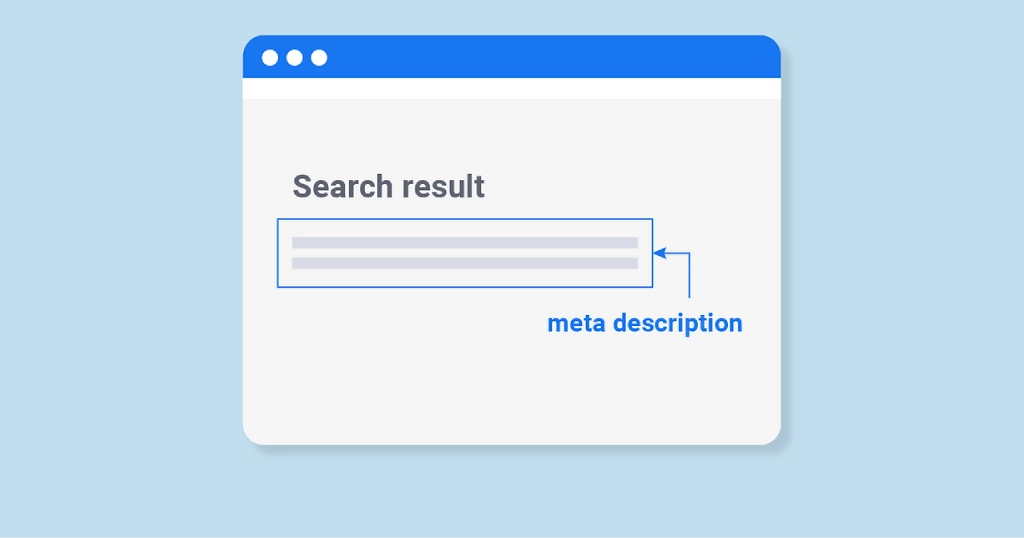SEO, or Search Engine Optimization, is the practice of enhancing a website’s visibility on search engines. It involves optimizing content, keywords, and technical aspects to rank higher in search results, ultimately driving more organic (non-paid) traffic to the site. Understandably, an enterprise SEO audit is a total inspection of a large website to see if all the tricks mentioned translate to the target business’s top performance.
If not, what more to be done to outpass the competition?
This comprehensive guide presents an SEO audit in all its essence. Learn the step-by-step process of conducting an SEO audit from start to finish. By addressing the issues identified in the audit, you can unlock all the potential of your business digitally. Please read on.

What is an Enterprise SEO Audit?
An enterprise SEO audit involves scrutinizing every element, from technical functionality to content relevancy. A librarian organizing a vast library is the best SEO audit example, ensuring the website is well-structured, user-friendly, and optimized for search engines.
Keyword usage, competitor evaluations, and technical aspects like page loading speed and mobile-friendliness are examined as part of this evaluation process. By studying backlinks and user behavior data, an SEO audit reveals the strengths and weaknesses of any online enterprise.
An SEO audit concludes with actionable recommendations you can and should implement immediately. This will surely increase the website’s visibility to become one of the top performers among the rivals.

Why Perform an SEO Audit?
An SEO audit is like conducting a timely checkup of your website. It detects technical flaws that might slow user experience or the site’s growth. So, you are up to repairing any potential bugs that hinder its functionality. Thus, your business remains healthy and thrives online.
Next comes keywords, making sure they match what your audience searches for. It is like unlocking a secret code to be found and increasing visibility. Examining competition? Done, too, so you can be the superhero of your digital domain. Backlinks and user behavior analytics serve as your website’s fan club to further boost credibility and establish yourself as the go-to authority online.
An SEO audit doesn’t just aim to address existing issues – rather, its purpose lie in unlocking all your website offers in today’s vast online universe.
How to Do an Enterprise SEO Audit?
Engaging in an enterprise SEO inspection is like being the detective for your website’s success. Start by investigating its technical details – such as whether links work correctly and pages load quickly enough on mobile devices.
Start with content creation; ensure it is relevant, easily understandable, and incorporates those magical keywords that people type into search engines. Next up? Analyzing competitors to understand what makes them tick.
Backlinks are your website’s endorsements; examine them to increase credibility. Examine data like an expert mathematician to gain a full picture of audience behavior and preferences. Thus, you can fix any problems as soon as they arise and create an actionable roadmap of improvement from the findings. Actionable strategies will offer your digital space an overhaul, essential and impossible to overlook.
What to Include in an Enterprise SEO Audit?
Conducting an enterprise SEO audit can unlock the keys to digital success. Think of it as an intensive journey to examine every digital component contributing to online presence. It will help your brand stand out in an increasingly saturated web landscape. Here is our checklist for SEO audit that can turn your site into an impressive digital asset.

Targeting Keywords
Targeting Keywords is essential when conducting a business SEO audit. It directly influences a website’s visibility and relevance in search engine results. Stitching relevant keywords into content helps enterprises target their desired audiences, leading to increased organic traffic. Ultimately, it translates to increasing chances of higher ranks on SERPs, resulting in brand visibility and potential conversions.
To accomplish keyword targeting, start with conducting extensive keyword research. This step should identify terms related to your industry, products, or services and high-volume yet low-competition keywords. You can use tools like Google Keyword Planner, Ahref, SEMrush, and more to ease your task.
Keyword Input
Search engine visibility is vital for any online enterprise, and keyword usage plays a vital role. SEO audit ensures keywords are strategically included to match user intent and create engaging content for marketing.
Begin by strategically placing keywords into prominent places on your webpage – such as its title, heading tags (H1, H2), and meta description. This enables search engines to understand which topic your page covers more effectively.
Integrate secondary and long-tail keywords seamlessly within body content for users’ optimal experience. Ensure you distribute keywords evenly to prevent over-optimization, which could result in penalties.
Also, put keywords into the URL structure, creating an easily navigable path for both visitors and search engines alike. When linking articles internally, you can add keyword-rich anchor text. Thus, you can strengthen their relevance and ensure all linked pages stay thematically connected.
Indexed Pages
Verifying Google’s indexing status of pages is integral to an enterprise SEO audit and an indication of their online visibility. To use this method, type your domain into the “site:” operator on Google search followed by “yourwebsite.com”. This will display all the pages indexed by the search engine.
Now, analyze any discrepancies between your site’s total pages and those indexed by Google Search Console. Regularly reviewing index coverage reports allows you to quickly detect and resolve indexing problems as soon as they arise.

URLs
Checking URLs is an integral component of an SEO audit to ensure optimal website performance. You can start by verifying URL structure for clarity and relevance; short, descriptive URLs work best here. Confirm whether they incorporate target keywords where applicable and assess the appropriate usage of hyphens between words to avoid underscores.
Check that URLs are easily understandable to both search engines and users. Including canonical tags prevents duplicate content issues and enables accurate indexing. You better confirm HTTPS connections using a secure connection, popularly known as SSL certificate insertion.
Title Tags
Title tags are vital in SEO, impacting search engine rankings and click-through rates of web pages. In an ideal situation, title tags should be brief yet compelling while accurately reflecting their page’s contents. Aim for 50-60 characters maximum to ensure visibility in search results.
Use relevant keywords naturally to enhance search engine understanding and rank higher for relevant queries. Keep each title distinct to avoid confusion across pages and ensure each title accurately represents its contents. Mentioning your brand name can strengthen recognition among search engines.
Headings
Headings, often represented by HTML tags like H1, H2, H3, etc., organize and structure content on a webpage. In an SEO audit, examining headings is crucial for several reasons.
Firstly, the H1 tag typically represents the main heading of a page and should succinctly convey its primary topic, incorporating relevant keywords. Each page should have a single H1 tag representing the main topic. Subsequent heading tags (H2, H3, etc.) organize content hierarchically. The hierarchical setting of Headings offers a logical structure that aids both user readability and search engine understanding.
During an SEO audit, validating the proper use and optimization of headings ensures that content is well-structured, user-friendly, and aligned with search engine ranking criteria.

Meta Description
The meta description is a concise HTML tag that summarizes the content of a certain page. Typically displayed below the page title in search engine results, the meta description serves as a crispy snippet that informs users about the page’s relevance to their query. It plays a crucial role in enticing clicks by previewing the content.
In an SEO audit, examining and optimizing meta descriptions is vital. A well-crafted meta description enhances click-through rates and contributes to search engine rankings. It should be compelling, accurately reflective of the page’s content, and include relevant keywords.
Link Assessment
Analyzing both the quality and quantity of links is central to an SEO audit’s understanding of a site’s authority. It is also crucial to guess its potential to rank well in search engine results.
Begin an in-depth backlink analysis using Ahrefs, Moz, or SEMrush tools. Assess both the total number and diversity of backlink domains that link back.
Quality matters as much as quantity; carefully assess the relevance and authority of linking domains. High-authority sites that contribute positively to SEO should be prioritized over potentially toxic or spammy backlinks. Those suspicious links might harm a site’s image or credibility.
Internally, examine your link structure for relevant and practical anchor text usage. Ensure internal links are strategically positioned to maximize user satisfaction while effectively allocating link equity.

Mobile-friendly Design
Mobile-friendliness has become an essential aspect of an online enterprise due to the steeply rising dependence on mobile devices for internet access. Google prioritizes mobile-friendly websites in its search rankings. That makes it crucial for enterprises to optimize their sites specifically for mobile users.
It unfailingly improves user experience and SEO performance by making mobile browsing accessible. A mobile-friendly site reduces bounce rates and enhances overall SEO performance. Thus, it contributes significantly towards overall business goals.
Google Mobile-Friendly Test and PageSpeed Insights tools effectively measure mobile friendliness during an SEO audit. Make sure the design adapts seamlessly across various screen sizes. That will help content load quickly on mobile devices. Touch-friendly navigation is offered as part of a seamless experience without zooming.
Site Speed
Site Speed should also be prioritized during an SEO audit as it impacts user experience and search engine rankings. Google considers page speed as one of its ranking factors. Websites with faster loading times typically perform better in search results. With happier visitors tending to engage more and having lower bounce, conversion rates spiral due to faster loading sites.
Use tools like Google PageSpeed Insights or GTmetrix to evaluate website speed during an SEO audit. They help highlight page load times, optimization opportunities, and improvement suggestions. These will present you with SEO consultant insights that may assist site optimization efforts and site speed assessments.
Optimize images, utilize browser caching, reduce server response times, and employ content delivery networks (CDNs) for enhanced site speed.

Image Inspection
Conducting an image review is an integral component of an enterprise SEO audit. Images not only enhance user engagement but can impact page load times and overall SEO performance as well. When conducting image inspection, consider their relevancy to the content they accompany. Also, check , whether or not they align with page themes and targeted keywords.
Adjust image file sizes to improve page load time with tools like Adobe Photoshop or online compressor. Use descriptive file names and alt text descriptions. Besides, stitch in relevant keywords for increased search engine response.
Verify that images are formatted properly to accommodate responsive design. This includes seamlessly adapting to various screen sizes and fixing lazy loading to prioritize loading images within the user’s viewport.
Sitemap
An enterprise SEO audit must include inspecting a sitemap as an essential element. Search engines rely on it as the blueprint to understand and navigate websites. An organized and up-to-date sitemap ensures all pages can be discovered easily to facilitate effective indexing. That leads to increased overall website visibility in search engine results.
At the sitemap audit stage, evaluate its completeness, accuracy, and compliance with the best practices. Ensure all relevant pages are covered, then submit it for updates through search engine webmaster tools.
A well-optimized sitemap helps detect issues like broken links or duplicate content and crawling errors. The significance of a sitemap is unrivaled for improved SEO performance and opportunities to address potential SEO performance gaps.

How Often Should You Conduct Enterprise SEO Audits?
Enterprise SEO audits should be carried out regularly. This is to remain agile with evolving search engine algorithms, industry trends, and organizational changes. A general recommendation is a quarterly audit. However, it can vary based on factors like enterprise size, pace of content updates, and industry competitiveness.
Consistent assessments help enterprises remain agile and competitive in today’s shifting online environment. Regular evaluations allow enterprises to keep an eye on key performance indicators.

How Much Does an Enterprise SEO Audit Cost?
The cost of an SEO audit depends upon various factors. And the key ones are website complexity, scale, analysis depth required, and expertise of the SEO service provider.
Enterprise-level audits typically range in cost between $600 and $1500. It is essential to consider both the long-term benefits and the expertise of SEO specialists when making this evaluation.
Fixing Problems Discovered During Your Audit
Fixing issues discovered through an SEO audit is of utmost importance, particularly issues like broken links, duplicate content duplication, slow page speed, and poor mobile optimization. Implement all the on-page SEO suggestions based on audit findings.
Technical issues, including crawl errors, canonicalization errors, and XML sitemap issues, should be taken care of immediately. About backlink-related concerns disavow toxic links while strategizing quality link building. Furthermore, regular monitoring and updating content to align with SEO best practices and user intent are highly advised.
FAQs
The enterprise SEO process involves comprehensive analysis, strategy development, and execution on a large scale. It includes keyword research, technical optimization, content creation, and ongoing monitoring to improve the online presence of large organizations.
Conducting a technical SEO audit involves assessing a website’s infrastructure, server and site speed, URL structure, crawlability, and other technical aspects. It aims to identify and resolve issues affecting search engine visibility and user experience.
Enterprise SEO targets a broad audience on a national or global scale, focusing on larger corporations. Local SEO, on the other hand, emphasizes optimizing for a specific geographic location. And it targets local businesses and their immediate communities.
The four stages of SEO are Planning and Research, On-Page SEO, Off-Page SEO, and Ongoing Monitoring and Adjustment. These stages encompass keyword research, content optimization, link building, and continuous analysis to improve search engine rankings and visibility.
Wrap Up
This comprehensive enterprise SEO audit guide uncovers all of its intricate layers. Those include website optimization from technical functionality to keyword mastery and competitor analysis. Learn to fine-tune your online presence for seamless user experiences and maximum visibility.
Yes, conducting audits at regular interval is crucial to stay ahead of the competition. Moreover, you can adjust to changing search algorithms and industry dynamics. That will enable you to quickly address any identified problems to transform digital ventures into vast sources of online revenues.
So, give a damn to SEO audit and rule the digital space involving your niche.












